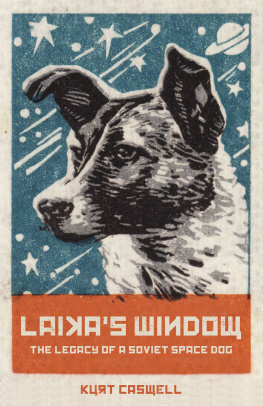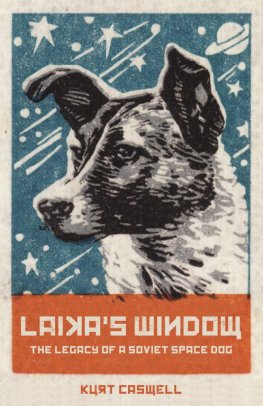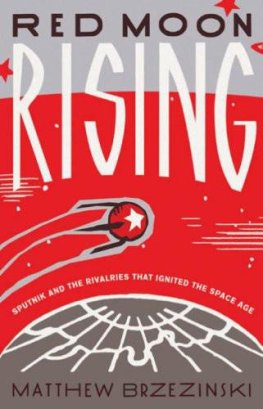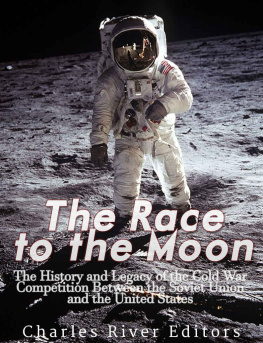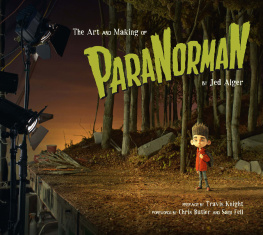
Laikas Window

Laikas Window
The Legacy of a Soviet Space Dog
KURT CASWELL

Trinity University Press
SAN ANTONIO
for You, whose star will cross the universe
for the Dogs, their limitless kindness
Published by Trinity University Press
San Antonio, Texas 78212
Copyright 2018 by Kurt Caswell
All rights reserved. No part of this book may be reproduced in any form or by any electronic or mechanical means, including information storage and retrieval systems, without permission in writing from the publisher.
Jacket design by Sarah Cooper
Book design by BookMatters, Berkeley
Frontis:
Laika in a training capsule, Sputnik/Alamy Stock Photo
ISBN 978-1-59534-862-3 hardcover
ISBN 978-1-59534-863-0 ebook
Trinity University Press strives to produce its books using methods and materials in an environmentally sensitive manner. We favor working with manufacturers that practice sustainable management of all natural resources, produce paper using recycled stock, and manage forests with the best possible practices for people, biodiversity, and sustainability. The press is a member of the Green Press Initiative, a nonprofit program dedicated to supporting publishers in their efforts to reduce their impacts on endangered forests, climate change, and forest-dependent communities.
The paper used in this publication meets the minimum requirements of the American National Standard for Information SciencesPermanence of Paper for Printed Library Materials, ANSI 39.481992.
Printed in Canada
CIP data on file at the Library of Congress
22 21 20 19 18 | 5 4 3 2 1
CONTENTS
ONE
A Path of Burning Light
The poets condition and the dogs is that
they can move for a while through flame.
VICKI HEARNE
Adams Task, 1982
April 14, 1958, must have been a particularly clear night, one of those nights you remember for the great wash of the cosmos overhead, and for the black blackness of interstellar space punctuated by stars uncountable. It must have been so, for along the eastern seaboard of the United States, and out over the Caribbean, out to the east of the islands of Saint Thomas, Antigua, Martinique, Saint Lucia, Barbados, Trinidad, on to British Guiana (now Guyana), and over a host of ships in the Atlantic positioned between 10 and 20 degrees north latitude, people gazing skyward saw a path of burning light. Some reported that they had seen a comet. Others said it was a meteor, the fiery path of a meteoroid burning in the Earths atmosphere, what we like to call a shooting star. And still others reported they had seen a UFO.
But what those people witnessed was not a comet or a shooting star, and it was not a UFO. It was a phenomenon that had occurred only one other time in Earths history: the reentry into Earths atmosphere of an artificial satellite, in this case the Soviet Unions second satellite, Sputnik II. On board was a small, white mongrel dog from the streets of Moscow. Her name was Laika. One of dozens of trained space dogs in the USSRs new space program, she was the first living being to orbit the Earth. And as the satellite Sputnik II came down, Laika was already dead. Her body, in a state of decay from the cooling and warming inside her capsule as it passed in and out of the influence of the sun, had been in orbit around the Earth for the previous five months, traveling at a speed of 17,500 miles per hour and making 2,570 revolutions. And as Sputnik IIs orbit decayed and it fell into the friction-wall of the atmosphere, it burned, and the worlds first space traveler, Laika, burned with it.
In the twenty-first century, such satellite reentry events have become almost routine. The National Aeronautics and Space Administration (NASA) reports that there are more than twenty-one thousand artificial debris objects in Earths orbit larger than ten centimeters, and half a million more measuring between one and ten centimeters. Even smaller objects, smaller than one centimeter, number over one hundred million. According to NASA, such debris includes derelict spacecraft, the upper stages of launch vehicles, payload carriers, debris intentionally released during mission operations, debris created by spacecraft or upper-stage launch vehicle explosions and collisions, solid rocket motor effluent, and flecks of paint from various spacecraft or spacecraft parts released by thermal stress and small-particle impacts. The space around our planet, like the planet itself, is awash in our garbage. This space junk burns up in the atmosphere all the time, some of it visible, some of it not, sometimes as planned by the objects creators (Russias space station Mir in 2001, for example) and sometimes in its own time or due to a loss of ground control (Chinas Tiangong-1 [Heavenly Palace] space station, which came down in 2018). The United States Space Command tracks scheduled and nonscheduled reentries, and if you are in the right place at the right time you might see one, if you can be bothered to look up.
But in 1958 when Sputnik II came down, such an artificial satellite reentry event had happened only once before, and that was when Sputnik I, the first artificial satellite ever, burned up in the atmosphere on January 4 of that year. The presence of something in orbit around the Earth that human beings had made was still in the realm of the fantastic. It occupied the fictional worlds of writers like Jules Verne and Arthur C. Clarke and the imaginations of scientists like Russias Konstantin Tsiolkovsky and Americas Robert Goddard. And so fantastic was the idea of one of these satellites coming down so that you could see it come apart across the sky, Italian-born American astronomer L. G. Jacchia made a journey to various key points along the path of Sputnik II to interview people and collect data. He filed Special Report 15, The Descent of Satellite 1957 Beta One, with the Smithsonian Astrophysical Observatory.
The story Jacchia tells is that in the early hours of April 14, Sputnik II fell out of orbit following a path from New York City to the mouth of the Amazon River. Observers in the eastern United States reported seeing a long, streaking tail pass overhead, not yet very bright, and followed by sparks, bursting and shuttering away. The satellite passed over Long Island and then went unreported for some five minutes before being picked up again at about 23 degrees north latitude. By the time it reached Antigua in the Caribbean, it had fallen to about 50 miles above sea level (down from its orbit at about 131 miles perigee and 1,030 miles apogee), and it had become self-luminous, a fireball rivaling the brightness of the moon. It fell, burning, pulling a long tail behind it, sparks flying off into the blackness. The head of that streak of light, the satellite itself, still carrying the body of Laika, glowed white with tinges of blues and greens through to the tails yellowish fire that degraded to oranges and reds out to the end. Pieces of the satellite broke off and burned alongside the main body, before dimming and dropping away. Observers on one of the ships at sea, the Regent Springbok, reported that the satellite looked like the tail of a peacock, each particle glowing through the spectrum from white to a deep blue in magnificent display. When the satellite reached about 11 degrees north latitude, east of Trinidad and Tobago, and had fallen to about 35 miles altitude, it exploded in a fiery burst, like great fireworks lighting up the dark. In the moments after that burst, an eerie pale light was reported, illuminating the decks of ships at sea and the sea around them. What was left of
Next page
